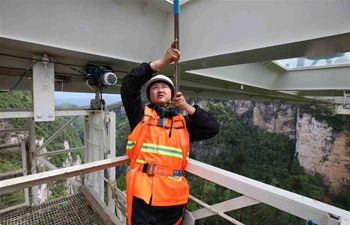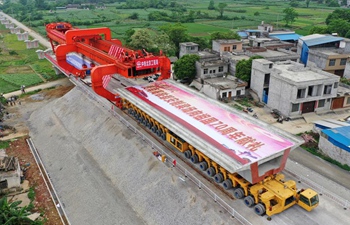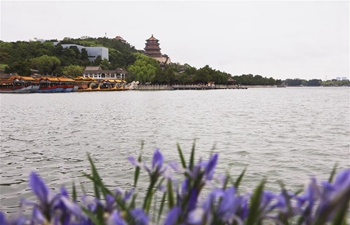ZHENGZHOU, May 1 (Xinhua) -- With a bow in the left hand, a jade weapon in the right and 18 pieces of lower jawbones of pigs on his feet, what power, force and wealth did he possess 5,000 years ago?
The identity of the owner of a tomb recently discovered by archaeologists at Huangshan ruins in the city of Nanyang, central China's Henan Province, has aroused discussions.
"The tomahawk-like jade weapon is a symbol of power," said Ma Juncai, head of the archaeological team and researcher with Henan Provincial Institute of Cultural Heritage and Archaeology.
"Meanwhile, other discoveries including a single wooden coffin, burial objects such as jade wares, stoneware, pottery and a large number of lower jawbones of pigs showed that the owner had power, force and wealth when he was alive," Ma said.
He added that this is the highest-grade clan tomb of Qujialing culture found in southwest Henan and even in the middle reaches of the Hanjiang River. Qujialing culture is a late Neolithic culture centered primarily around the middle reaches of the Yangtze River.
Archaeologists also found two house ruins during the late Neolithic Yangshao culture near the suspected clan leader's tomb, each with an area of more than 120 square meters. They are believed to be jade processing workshops, with jade materials, semi-finished and finished jade articles and jade-making tools unearthed at the location.
"The house ruins are very meaningful for studies on the housing structures and building techniques of Yangshao culture," said Luan Fengshi, a professor with Shandong University.
The Huangshan ruins, discovered in 1959, has an area of more than 200,000 square meters. It is of great significance to the study of cultural exchange between the north and south of the Neolithic Age.
















